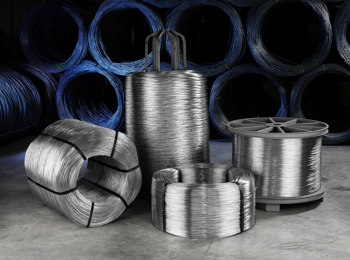dec . 07, 2024 05:20 Back to list
China Gabion Basket Materials for Construction and Landscaping Applications
Gabion Baskets Materials and Applications in China
Gabion baskets have become increasingly popular in recent years for various civil engineering and landscaping applications. Originating from the Italian word gabbione, meaning big cage, these structures consist of wire mesh filled with stones, soil, or other materials. In China, the use of gabion baskets has gained traction due to their versatility, durability, and eco-friendliness. This article will explore the materials commonly used in gabion baskets, their applications, and why they are becoming a favored choice in construction and landscaping.
Materials Used in Gabion Baskets
1. Wire Mesh The primary material of gabion baskets is wire mesh, which is typically made from steel or galvanized steel. The galvanization process protects the wire from rust and corrosion, which is particularly important for structures exposed to harsh weather conditions. Stainless steel wire is also an option, offering enhanced durability and resistance to corrosion, although it comes at a higher cost.
2. Filling Materials The filling materials for gabion baskets can vary widely, depending on the intended use of the structure. Common options include - Natural Stones These are the most traditional filling materials. They not only provide structural integrity but also blend seamlessly with the natural landscape. River rocks, granite, and limestone are popular choices due to their strength and aesthetic appeal. - Recycled Materials Increasingly, the construction industry in China is turning to sustainable practices. Recycled concrete, construction debris, and other materials reduce environmental impact, making them favorable options for filling gabion baskets. - Soil and Vegetation In certain landscaping applications, gabion baskets are filled with soil and plants to create living walls. This setup not only stabilizes slopes but also promotes biodiversity and enhances visual aesthetics.
3. Coatings and Treatments For additional protection against the elements, gabion baskets may be coated with various treatments. Polymeric coatings can significantly extend the life of the wire mesh, while protective fabrics can prevent soil erosion in cases where soil is used as fill.
Applications of Gabion Baskets in China
china gabion basket material

Gabion baskets have found numerous applications across different sectors in China, reflecting their versatility
1. Erosion Control In areas prone to soil erosion, gabion baskets provide a robust solution. They can be effectively used to line riverbanks, stabilize slopes, and protect roads and railways from the erosive effects of water. The porous nature of gabion baskets allows water to flow through while retaining soil, making them an effective tool for controlling sedimentation.
2. Retaining Walls Gabion baskets can serve as retaining walls in both residential and commercial construction projects. Their ability to adapt to varying terrains and their permeability make them an excellent choice for retaining soil while allowing for drainage.
3. Landscaping and Aesthetics In urban areas, gabion baskets have become an attractive landscaping element. They can be used to create decorative features, seating areas, and garden borders, providing both functionality and aesthetic appeal. The use of colorful stones or integrated plantings adds to the visual interest of public parks and commercial spaces.
4. Flood Protection With climate change leading to increased rainfall and flooding, gabion baskets are being employed as temporary flood barriers. Their strength and flexibility make them ideal for creating quick and effective flood defenses.
Conclusion
The increasing use of gabion baskets in China can be attributed to their multifunctional characteristics and environmentally friendly attributes. As industries seek sustainable construction methods and stormwater management solutions, gabion baskets will likely continue to play an essential role in building resilient infrastructures. By utilizing durable materials and promoting eco-friendly practices, the future of gabion applications in China looks promising, contributing to both functional and aesthetic enhancements in the country’s landscapes.
-
Versatility of Chain Link Fence Gabion
NewsMay.13,2025
-
Trusted Gabion Box Suppliers
NewsMay.13,2025
-
PVC Coated Gabion for Long-Lasting Structural Integrity
NewsMay.13,2025
-
Garden Gabion for Stylish
NewsMay.13,2025
-
Galvanized Gabion for Durable Outdoor Structures
NewsMay.13,2025
-
Gabion Box Factory
NewsMay.13,2025
-
Gabion Basket Wire Gauge and Mesh
NewsMay.13,2025






